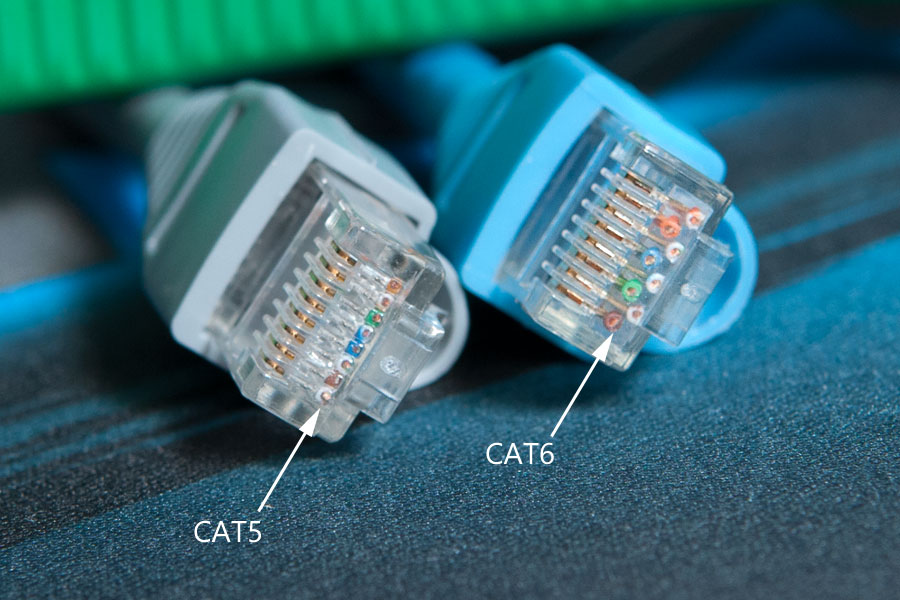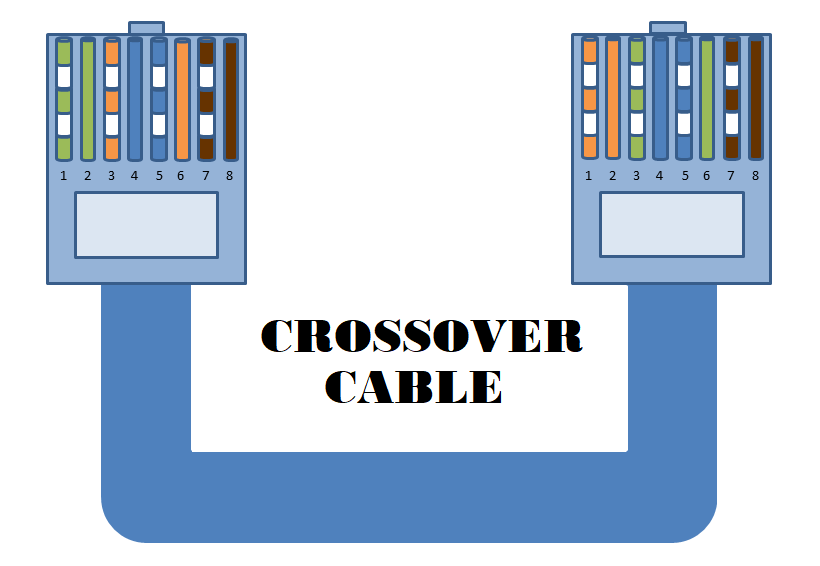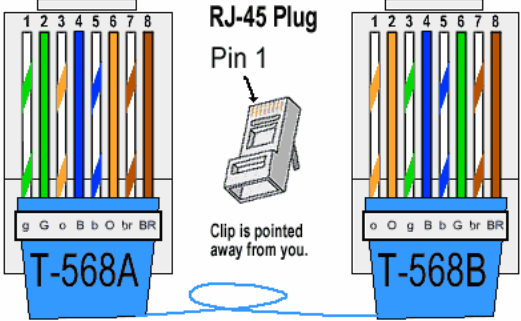Color Coding Cat 5e and Cat 6 Cable Straight Through and Cross Over
Table of Contents
The most common twisted-pair connector is an 8-position, 8-contact (8P8C) modular plug. It is referred to as an RJ45 connector.
- for Cat 5e cable
- for Cat 6 cable

When terminating the network cable, it is necessary to arrange the colored transmission contacts in the correct order. T568A and T568B are two different standards that are used to determine the order of their arrangement. What is their difference? This topic will be covered in this article.
What are the T568A and T568B standards?
The only difference between T568A and T568B is the position of the orange and green wire pairs.
What are straight through and cross cables?
What is a straight through cable?
Straight through cable is one of the types of twisted pair cable that is used in local networks to connect a computer to a hub, a router, or a switch. This type of cable is often also called an Ethernet Patch Cord, it is used as an alternative to a wireless connection.
In a straight through cable, the contacts of the wires correspond to the contacts on the other side. In a straight through cable, one standard for the arrangement of wires is used – either the T568A or T568B standard is used at both ends of the cable. Below is a diagram of a straight cable in which the transmission contacts at both ends of the wire are located in accordance with the T568A and T568B standards.

- Green/White
- Green
- Orange/White
- Blue
- Blue/White
- Orange
- Brown/White
- Brown

- Orange/White
- Orange
- Green/White
- Blue
- Blue/White
- Green
- Brown/White
- Brown
What is a crossover cable?
A crossover cable is used to connect computing devices directly. It is most often used to connect two devices of the sametype, for example, two computers (via their network interface cards ) or two switches to each other. In contrast, straight through cables are used to connect different types of devices ( a computer to a network switch).

Unlike a straight through cable, different standards for the arrangement of transmission contacts are used in the cross cable: As the T568A and T568B standards differ from each other precisely in that pairs 1-2 and 3-6 are rearranged in them, to make a cross cable for the 10BASE-T and 100BASE-T networks, it is enough to compress one end of the cable according to one standard, and the other end — according to the other.

The arrangement of the wires of a straight cable differs from a cross cable. An easy way to determine which wire you have is to look at the colored contacts of the wires inside the RJ45 connector. If the order of the wires is the same at both ends, you have a straight cable in front of you. If not, then, most likely, there is a cross cable in front of you, or the wires are located incorrectly.
Learn more: What is the maximum length of an Ethernet cable of different categories?


Thank you for providing the right materials for us. Just want to ask permission to used this in classroom demonstration if it is okey please send me a note using my email address.
Best regards
very informative thanks,keep up the good work
Crossover cables are not needed with modern gigabit networking. The chips in modern computers and switches automatically recognize that they’re connected together with a straight-through cable and negotiate with each other which pair will be send and which will be receive on each device. Crossover cables are a relic of 10 megabit networking and hubs, which were dumb devices that had no smarts.
In short, make patch cables and if you do have to connect two switches or computers together with patch cables, recognize that all modern switches work just fine that way.